Testing the Zeiss Loxia, ZM 35 1.4 and Otus lenses on the A7r
(some quick shots from Photokina)
by Dirk De Paepe
Recapitulation of a Problem
Perhaps you look upon the Sony A7x series as the first full frame alternative to the Leica M: a compact, high quality full frame camera, that’s about perfect for manual shooting – although not without issues, but then, I’ve yet to see the first perfect camera. 🙂
Today the A7s gets a lot of applause, not only for its high ISO capability, but also because it “fixed” some of the issues of the A7r: the shutter sound is one, but IMO the questionable compatibility with quite some M-mount wide-angle lenses is an even more important item.
For many photographers, the possibility of using the compact M-mount lenses on the A7x, via adapter, is one of the attractive features of those cameras. But particularly the corner problems that primarily the A7r poses, when used with (quite some) wide-angle M-mount lenses, are mentioned frequently as a set back, reducing the A7r owner’s choice regarding compact wide-angle glass. Not all M-mount wide angles pose this problem though: some of the Voigtländers work flawlessly. But most Leica M en Zeiss ZM wide angles render this purple/magenta color shift and smearing in the corners, which we really don’t want.
I own the Zeiss Biogon 28 ZM and have experienced it too. Although with certain apertures it’s possible to avoid almost all of the smearing and the color shift can most of the time easily be neutralized in Photoshop, still it limits the possibilities and ease of work. So I mainly use the Voigtländer Nokton 35/1.4 (very compact M-mount) and some wider Canon FDs as WAs for now. For now, indeed, because I was pretty confident that a “solution” would be in the make. As a matter of fact, I hoped for some time that Sony would somehow fix this problem. But is it really Sony’s problem to fix? Well, recently I changed my mind about it…
The solution has a name: Loxia.
When Zeiss announced its new Loxia series for Sony’s FE mount and when I saw that those were based on the compact ZM series, I immediately wondered: what about the corners when shooting a Biogon wide-angle on the A7r? The so far published images (that I’ve seen) didn’t mention which A7-type was used (there was no Exif data available), or they were taken with the A7s, on which the WA M-mount glass poses no problems. So I was stuck with the question: how will the new Loxia Biogon 2/35 perform on my A7r?
The Loxia Biogon 2/35 on the A7r
Living at less than 2 hours from Cologne, I decided to make the trip to Photokina, to get the answer. I was there on Saturday, when the fairground was pretty crowded, with lots of people thronging at the Zeiss technicians counter, wanting to get answers to their questions and trying all kinds of Zeiss lenses on all kinds of cameras.
So I had to take my shots pretty fast and I had to take them all from the same spot: my position at the technicians counter. Sorry for that. But my goal was not to shoot nice pictures, my goal was to get answers. Does the Biogon perform well on the A7r?
Short answer: YES it does! Absolutely!
I first checked if there was any color shift at the corners, putting the aperture wide open – the most sensible setting. With a booth made from white/greyish panels, it was easy to check. It’s very clear: the Biogon produces no color shift what so ever! It was immediately absolutely clear, from the first shot, but I can add to that: in none of my shots, at whatever aperture, there was even the faintest glimpse of color shift to be noticed.
Pic 1. Loxia 3/35, f/2, &/500s, ISO200. No color shift whatsoever. I focused in the left upper corner, to check the corner detail at f/2. IMO a bit ridiculous to absolutely want perfect corners when shooting wide open, but since some people come up with this issue, I wanted to check it. Next picture gives a 100% view of that corner
And what about the smearing? Well, again when shooting wide open the image remained pretty clear and detailed in the corners, with only some loss of detail in the farthest reaches and (IMO) no smearing. Considering how deep in the corners I’m talking about, I’d say only a slight loss of detail in the corners. But let’s be honest, when you really want every spot of your picture to be clear, you don’t shoot wide open, do you… In general I was absolutely astonished with the level of detail this Biogon renders at f/2. Without ever getting razor-sharp, the amount of detail is pretty amazing, even when looking at 100% and shooting with a 36MP sensor. And also the vignetting is at a very low-level, IMO negligible.
Pic 2. 100% crop. In the farthest reaches of the corners, there is some loss of detail. Not too much, I’d say, because I can even read numbers there. I certainly wouldn’t talk of smearing. There is some difference in detail to be noticed, due to some items being positioned slightly out of focus, like in the text on the left box. Don’t be mistaken there. Anyway, I find the detail that this Biogon renders wide open to be really astonishing.
–
Pic 3. Loxia 2/35, f/2, 1/60s, ISO250. Also the vignetting is negligible, even wide open. Focusing in the center.
–
Pic 4. 100% crop (click to see full size).. Without being razor-sharp, all the detail is there. No added sharpness.
–
Pic 5. Loxia 2/35, f/2, 1/60s, ISO250. No 2/35mm renders a spectacular bokeh. Still this one is pretty smooth and for sure renders a nice 3D separation.
–
Pic 6. Loxia 2/35, f/4, 1/60s, ISO400. DOF is a bit larger, still with beautiful bokeh, also in front.
–
Pic 7. 100% crop (click to see full size).. Even at f/4 focusing needs to be done with care on the A7r. I missed the focus on the watch here and placed it on the guy’s shirt, revealing all the shirt’s detail…
At the more narrow apertures, those that are used when pursuing a wide dof, the detail is excellent all over. Is it absolutely perfect? Well, no. This is no Otus, but a three times less expensive Loxia. Still, IMO, the IQ is excellent, with clear detail all over, although still slightly soft when looking at 100%, but not at all to the extend that one can call this a weakness.
Pic 8. Loxia 2/35, f/11, 1/40s, ISO400. Only cropped horizontally.
–
Pic 9. Loxia 2/35, f/14, 1/10s, ISO400. Only cropped horizontally.
–
Pic 10. 100% crop (click to see full size)..
This is absolutely not a lens test, so I won’t go into all lens characteristics. I couldn’t take enough different pictures, nor perform tests to do that. I’m sure there will be enough articles in the near future from professional photography journalist that will come up with all the details.
Still, what I also noticed is some fringing (diminishing with narrower apertures of course), which I always could correct with great ease in Photoshop. I didn’t check the distortion, but personally I don’t mind that too much, since this is also easily correctable. BTW, I understand that Zeiss also gave extra care in that department, so again, I have no worries here. Overall, I liked very much what I saw, also regarding the OOC color balance, dynamic range etc. – so I’m very confident that I won’t be disappointed in this Biogon and that it’ll render a typical Zeiss IQ – I expect it to be even slightly better than my ZMs.
Improved optics
When I told the technician that I was pleasantly surprised, after being worried when I noticed the great similarity between the Loxia and ZM Biogons, and that I wondered how Zeiss has solved the corner problems without considerably lengthening the distance between back lens and sensor, he told me that the two Loxia lenses are admittedly built after classic Zeiss concepts, but that the whole calculation has been redone, resulting in differences in the thickness of the glasses and the space between them, whereby the light approaches the sensor in different angles, thus avoiding the known problems of the older ZM lenses (lenses that were conceived for film cameras and Leica digital cameras, not for mirrorless sensors). Even the Planar, that in ZM version doesn’t pose any problem at all on the A7r (and is BTW my personal favorite lens) has been reworked and optimized with enhanced performance. Regarding the Biogon, even after a few shots, I can without a doubt state, that they did a great job. I leave it to the professional reviewers to determine exactly how great. But I’m impressed. And excited. There simply is not a shred of color shift in the corners and wide open there’s only a slight decrease of detail in the farthest corners, which I wouldn’t call smearing at (far from what we know from the ZM Biogons, when used on the A7r). What I also noticed was that this lens renders about the same detail wide open as it does stopped down (with the exception of the farthest corners, as I said), which was a véry pleasant surprise. There is some vignetting wide open (but really not much) and some fringing as well (always very easily removable in Photoshop). What did you expect. This is no Otus, it’s not perfect. It’s three to four times cheaper than Otus and still is an excellent lens. I’m sure future tests will confirm this.
General Loxia advantages for Sony’s A7x
So the Biogon is absolutely “good to go” on the A7r IMO, or in other words, it’s a great option to buy, if you’re into manual prime glass. You won’t be surprised that I placed my order for both Loxias. Also the Planar, which maybe will surprise you, since I own the ZM Planar that really is without issues on the A7r. But Loxia offers a lot more than ZM. First there is the better optical performance (reworked for E-mount), then there is the shorter minimal focal distance (30cm for the Biogon and 45cm for the Planar versus 70cm for both ZMs), further there is the transmission of full Exif info, which I applaud because after a series of shots with different lenses I tend to forget what lens I used for which shot, let alone what aperture. Often I can “see the lens in the shot”, but really not always with absolute certainty. And I find it very interesting to know the exact aperture afterwards. And finally, the last big advantage of Loxia over ZM is the activation (which is to be programmed on your A7x) of the automatic enlargement in the VF, by the slightest movement of the focus ring, which completes all means for performing “modern manual focusing” on the A7x. IMHO, all the focusing functionalities of the A7x/Loxia strongly outperform any optical viewfinder. OK, a range finder is something special, but personally, I don’t wanna do without the modern EVF functionality anymore. No way. They abundantly outweigh the range finder’s advantages (all IMO of course).
Pic 11. Left half: Loxia Planar 2/50, f/16, 1/40s, ISO1600. Right half: ZM Planar 2/50, f/16, 1/40s, ISO1600. Both picture were shot at minimal focal distance – Loxia at 45cm, ZM at 70cm and they were only horizontally cropped. Impressive difference. A big advantage of the Loxia. (The ZM picture was shot back home.)
Personally, I’m really thrilled about Zeiss developing the Loxia line. There has been lots of reactions on it, with many complaining about the first two lenses being 50 and 35mm again. Why not chosing other focal lenghts that people miss right now? The answer is really simple. Loxia is for a totally different type of photographer, namely the typical manual shooter, like I am. As much as I admire the image quality of the AF Zeiss lenses, I’ll never buy them because I don’t feel good when the camera decides for me. The only “automation” that I use is aperture priority and still, I’ll determine the exposure with the compensation dial or by holding the release button halfway while reframing.
The core of any optical system is, no doubt, the lens. I think we can say that Zeiss plays in the same league as Leica. Both have passionate proponents. I guess it’s probably the kind of photography one practices, that make one belong to either camp. Personally, I’d mix both brands, if the Leica prices were at Zeiss level. But they aren’t. So I don’t buy Leica… a personal matter.
The core of the body is, without any doubt, the sensor. Sony, a leader amongst sensor manufacturers has an excellent position in this department. The rest of the body is functionality, in other words advanced electronic applications, and build quality. It needs no saying that Sony is an electronics giant and in many branches, and in general the Sony quality is legendary. I’m not saying there are never issues with Sony products, everybody makes “mistakes”, but this a giant and I believe that this giant is determined to succeed in photography. So the Sony/Zeiss combination has for sure a lot of things in its favor. Now, with Loxia, the glass is perfectly maching the body, adapter free, with transmitted Exif data, automated magnification in the EVF and a design and feel that perfectly matches the body.
I told you that I already placed my order, even for the Planar, while I’m owning an Otus 55 ànd ZM Planar 2/50. But the Planar is my all time favorite lens. Its compact size, ease of use and always reliable IQ grants it this status. This is the lens that I always carry on my camera, making it possible to carry a high-res/high-IQ camera with me whenever I want, wherever I go to, without ever being bothered by it. Now, with the Loxia Planar, my carry-all-time lens will match my body for 100% and add some functionality that I welcome very much.
Loxia is made for sensors of mirrorless cameras, Zeiss ZM (and Leica M) is made for film. In its digital M bodies, Leica corrects its lenses with software. The Zeiss Loxia doesn’t need to be corrected, because it’s optically designed for sensor. BTW, I wonder if Zeiss doesn’t think of making Loxias in M-mount, or at least come up with a new generation ZMs, that would have the Loxia optics. Makes sense IMO.
The Otus 85 on the A7r
With so many Otus lenses on their Photokina booth, ready to try out, of course I asked for the new 1.4/85. You probably already knew from a former article that I own the Otus 55 and believe that Otus is a great combination with the A7r. This top-level Zeiss line is developed for the latest (and future) generations of hi-res sensors, and Sony plays a leading role in this, with the A7r still leading the pack. So I pulled out my Novoflex adapter and mounted the Otus 85 on the body. The bystanders payed extra attention, when I then pulled a vertical grip out of my bag and mounted it with some swift moves on the A7r body.
My goal was in no way to test the lens on itself. Knowing the 55 and reading from all thrustful sources that the 85 is even a todd better (is it really possible?), I have not the slightest doubt that this lens will perform to its expectations. What I was curious about was how it felt in the hand, when mounted on the A7r, and I also wanted to get the “focus experience” at f/1.4, because already with the 55, focusing at 1.4 needs to be done with great care.
I immediately felt that the 85 is an even heavier and thicker beast than the 55. It’s a muscle trainer for sure. I don’t know how long I would be able to shoot continuously with it, I can only say that I felt it considerably more than when holding the 55. But I can’t tell if it’s only because the physical geometry is different and that it’s gonna be a matter of getting used to it, or if it really would tire me out faster. But what I can tell you for sure is, that, with the same way of holding it as I described in my Otus 55 article, this lens/body combination lies incredibly stable and well-balanced in the hand. I already said that the shots were to be made fast at the Zeiss technicians booth, so I took a fast picture of the gentle technician that was helping me. He was standing pretty close, at the other side of the counter. I focused on his eyelashes and took the shot at 1/25sec, which is in fact insanely slow for an OOH shot with a 85mm lens. But the total absence of motion blur proves the perfect balance of this lens/body combination, again indicating that the A7r is a body worth considering for use with the Otus 85, as it is with the Otus 55. That’s exactly what I wanted to know with my trial shots.
Pic 12. Otus 1.4/85, f/1.4, 1/25s, ISO100. Shooting at this shutter speed with an 85mm lens is only possible when the lens/body combination is in perfect balanse, which IMO is the case with the A7r + vertical grip. At the crowded Zeiss booth, this shot of a (very busy) Zeiss technician needed to be taken in seconds.
–
Pic 13. 100% crop (click to see full size). What stroke me is the extremely shallow dof. I don’t know how this can be possible (maybe somebody can explain), but I have the impression that the Otus 85 produces an even more shallow dof than the Canon FD85 at f/1.2, that I also own. And if not, it must be véry close. But for sure, I’d swear it’s the Otus that wins this trophy. While the eyelashes are in focus, the eyeball is already out of focus. The eyebrow is only partly in focus. At this distance, I normally wouldn’t take this shot at f/1.4, because I’d surely want a somewhat larger dof. Still it’s nice to have the potential at hand and for greater distances it will surely do a great job.
Focusing at f/1.4, for use at full size images with a 36MP sensor (or more in the near future), must be done with the greatest care. This was no surprise to me, with my experience with the Otus 55, it was just a confirmation. It’s odd that I have the impression that focusing the Otus 85 at f/1.4 requires even more precision than with my Canon FD85 at F/1.2. I even think to notice an even shallower dof with the Otus. It’s just an impression, a feeling. But a strong one. Maybe it’s because of the incredible detail Otus renders, combined with 36 megapixels. Again, I didn’t perform test procedures with this in mind, it’s just a feeling. BTW, I love the FD85/1.4.
Last thing about the Otus 85: I absolutely love the super creamy bokeh!
Pic 14. Otus 1.4/85, f/1.4, 1/20s, ISO100. Only horizontally cropped. Is this a creamy bokeh or what?…
The ZM Distagon 1.4/35
By then, after shooting the Otus 85, the guys behind me were increasingly insisting to get a place at the counter. But still I managed to get the new ZM Distagon 1.4/35 for a few super fast shots. I simply wondered whether Zeiss, knowing of the problems that some of the ZMs have with modern hi-res sensors, would take this into account when developing new wide-angle ZMs. I quickly took two shots with the new ZM Distagon. In the first I just shot the grey-ish white wall, to check for color shift. The picture is absolutely dull, of course, but it was conclusive: no color shift.
In the second (and last) super fast taken shot, I focused on a guy in the upper left corner, to check for smearing. No smearing (although the picture isn’t perfect, with a tiny bit of motion blur, but no smearing). What I did notice in those shots was that, wide open, the vignetting and fringing was more prominent than with the Loxia Biogon. But then, this is a f/1.4 vs. the f/2 Loxia. So this is normal. And nothing that I couldn’t correct in Photoshop.
So I guess that future Zeiss ZM lenses will work perfectly on film bodies, Leica M bodies ànd fullframe mirrorless bodies – from Sony and other brands to follow.
And I’m very much looking forward for future new products in their new lines, Otus and surely Loxia. I’ve been having a soft spot for Zeiss for about 50 years now. I think this spot is only going to further grow in the years to come… 🙂
Pic 15. ZM 1.4/35, f/1.4, 1/25, ISO100. A clearly more explicit bokeh than with the Loxia 2/35, but also more fringing (as well as vignetting, which this pic doesn’t show clearly) – though nothing that can’t be corrected, I guess.
–
Pic 16. Defringed crop. I thought, since the shot was not really OK, it wouldn’t be fair to show the fringing. So I corrected it in Photoshop for this crop.
Epilogue
IMO, the Loxia line, once it’s to be completed as yet, will definitely turn the A7x series into today’s superior compact system for manual shooting, offering a more modern concept than Leica. I can truly say that I don’t dream of Leica anymore. This Sony/Zeiss FE-system really is more desirable to me than the Leica M-system – outperforming it (again IMO) and… reasonably priced! My personal dream of today: owning both the A7r (for resolution) and A7s (for ISO) with a complete set of Loxias. But what I expect (of course I can’t be absolutely sure about it) is a future Sony sensor that will combine resolution and high ISO. I’m sure it will happen, maybe in some years time, but probably earlier than I expect. And it will be mounted in an FE-mount Alpha body! Thàt will be my next camera…
Dirk De Paepe
B&H Photo sells the Loxia lenses HERE, the OTUS is HERE and the new Zeiss 35 1.4 ZM is HERE

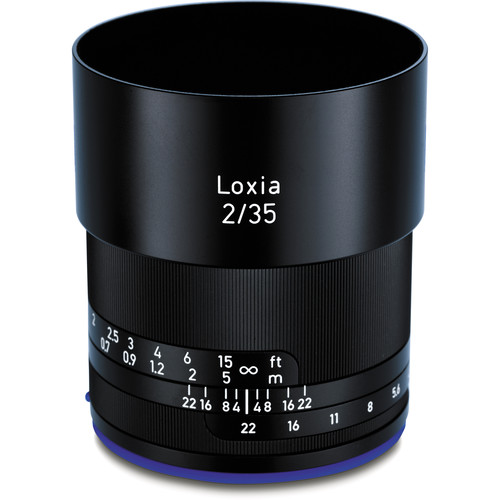
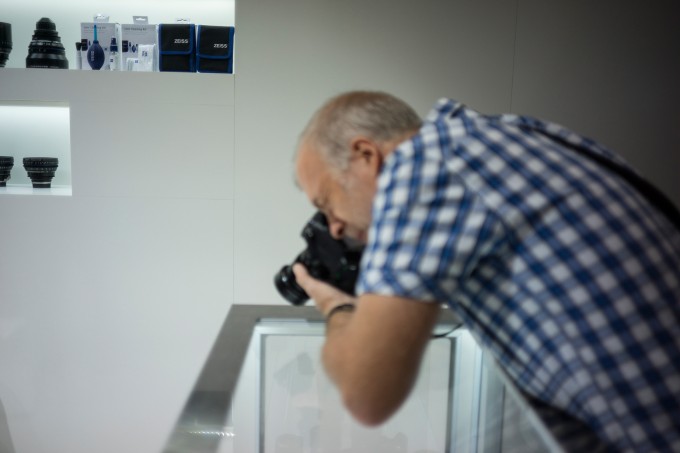
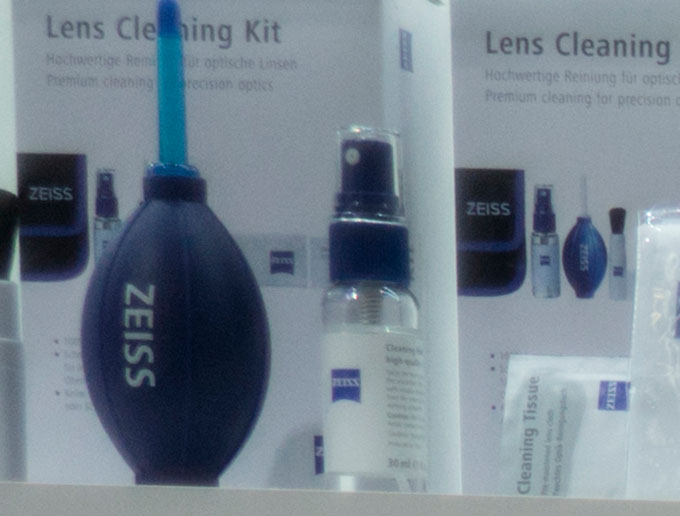
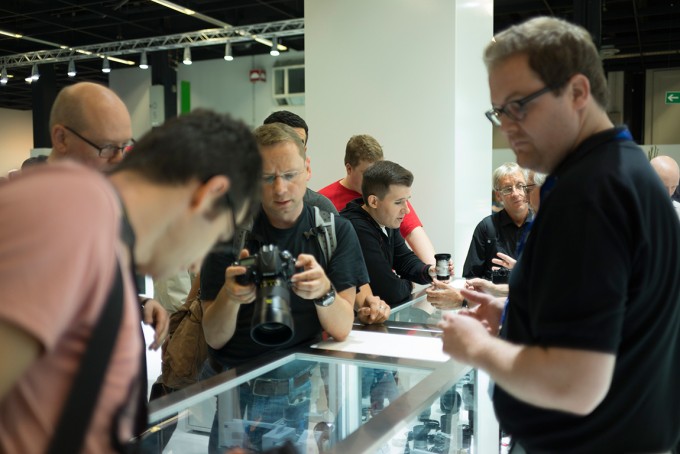

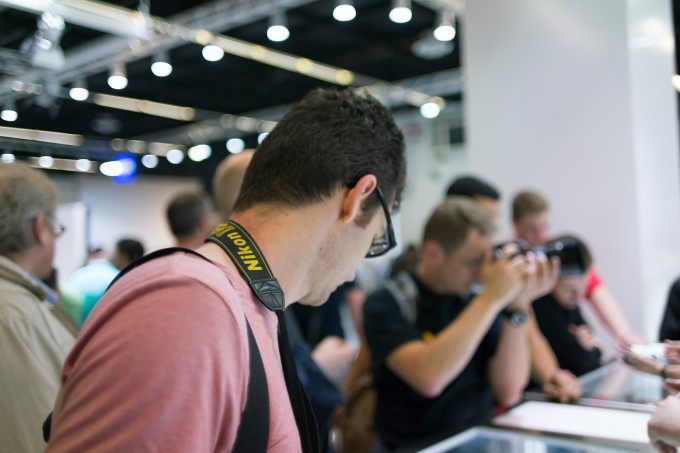
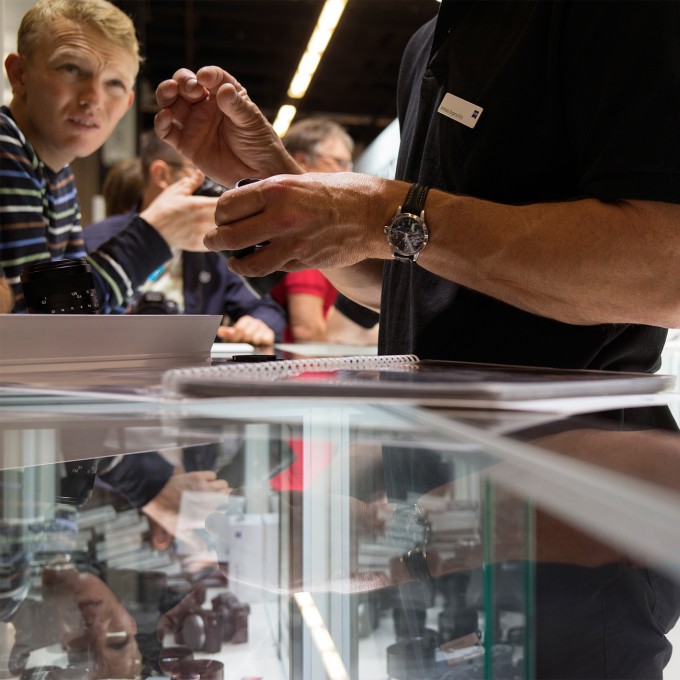
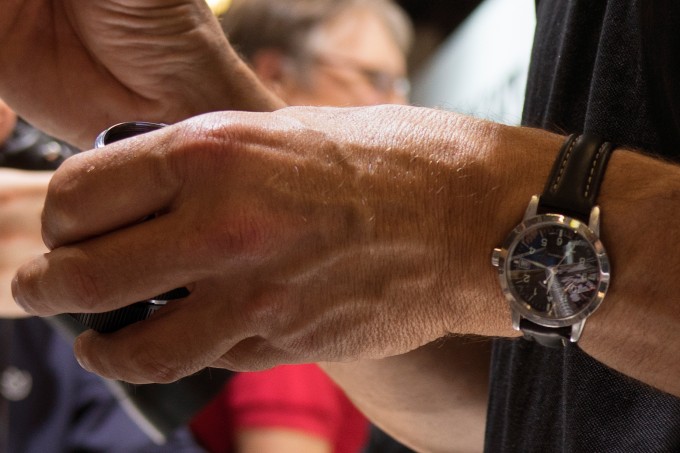
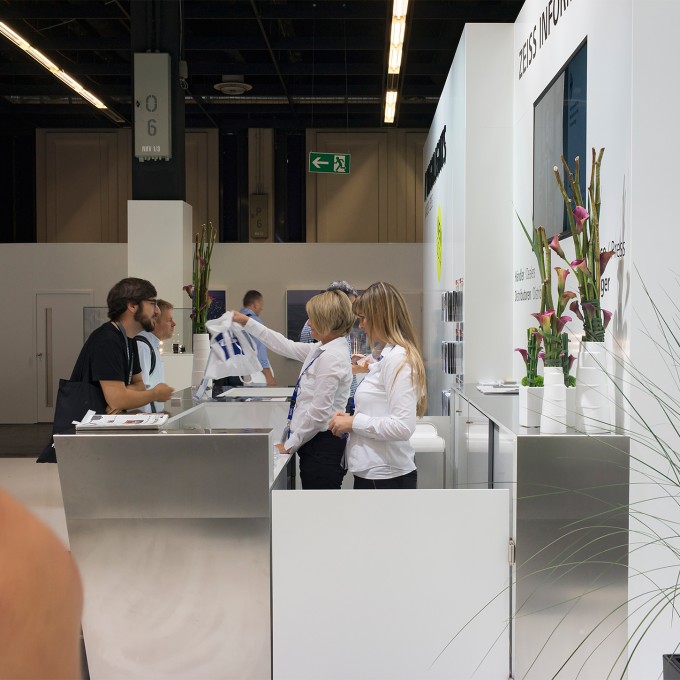
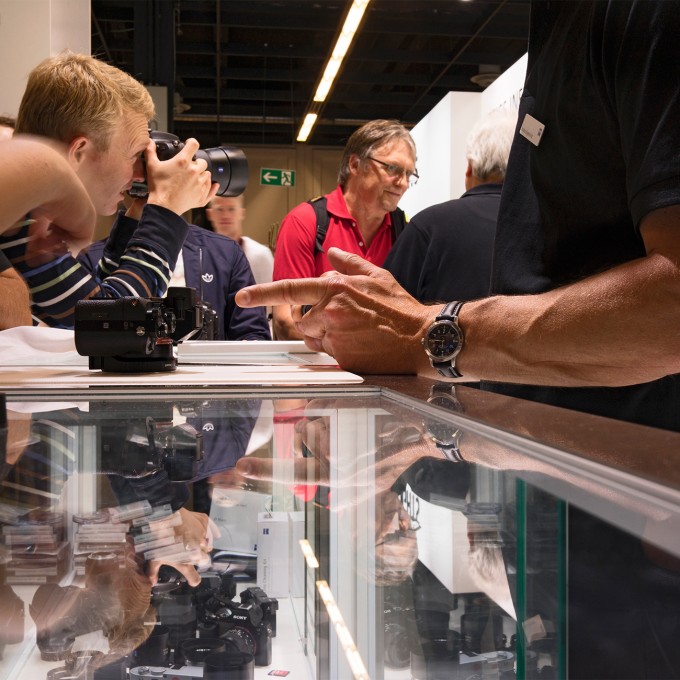
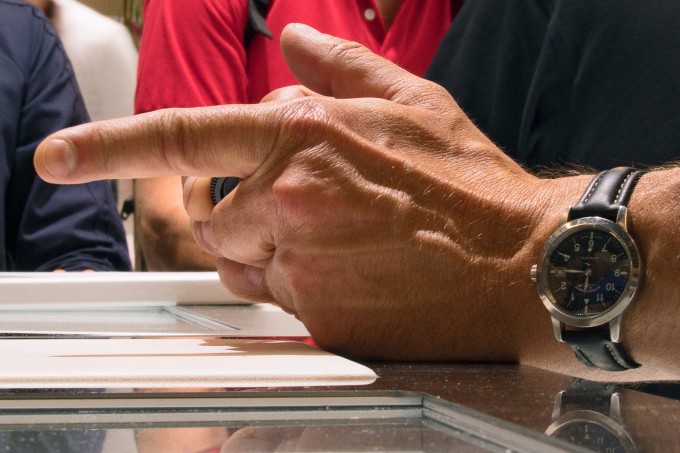
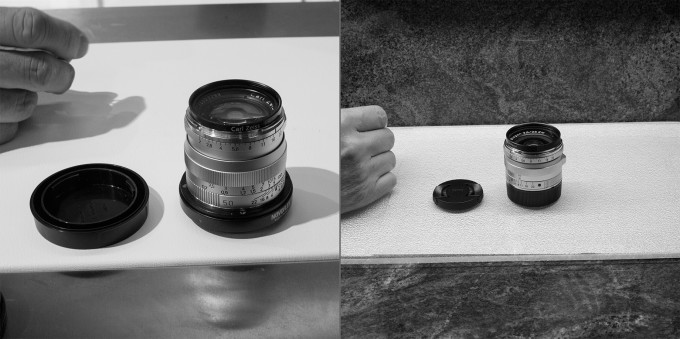
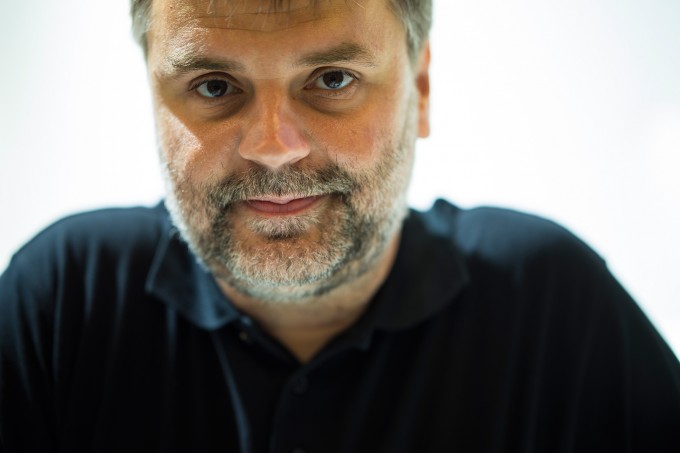
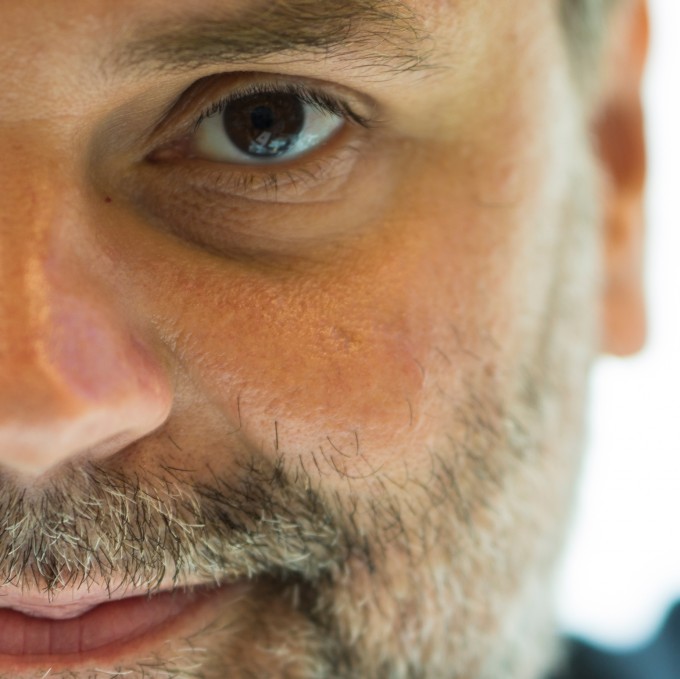
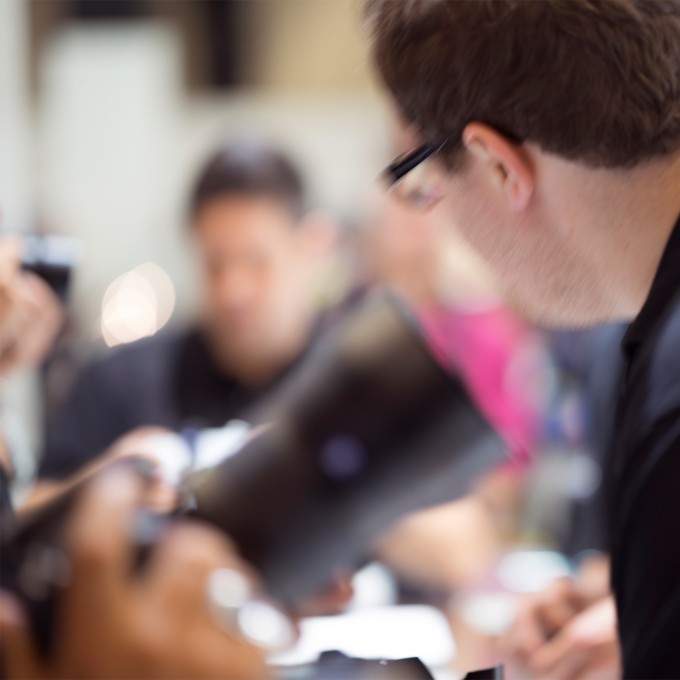
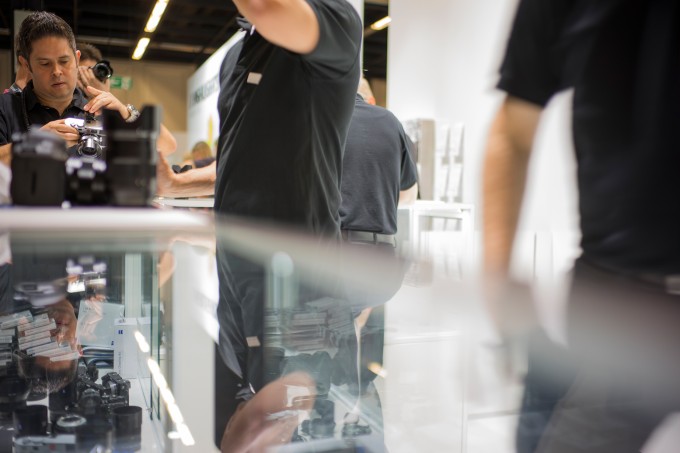
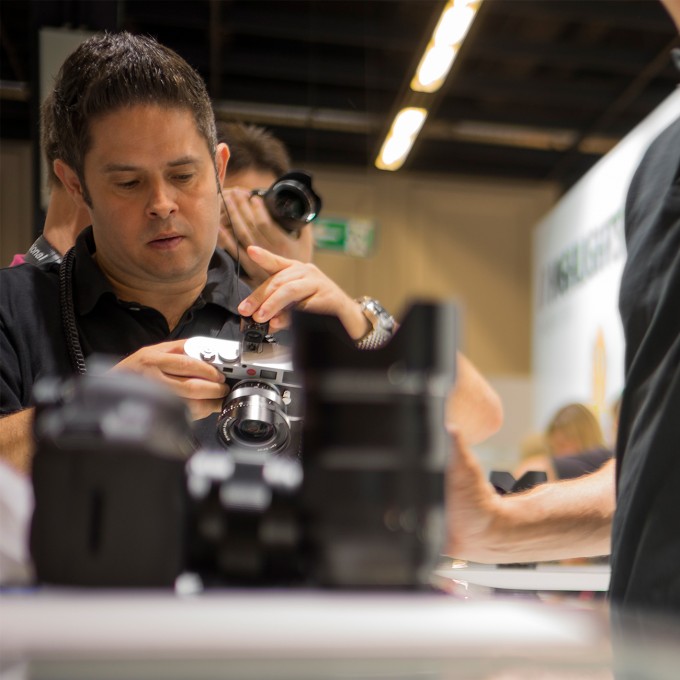

Just received my Loxia 35 and I must say that I am very disappointed and am probably returning this lens.
It is very soft with little contrast in the center at f2.0. It has a “milky” haze wide open. This is not acceptable for a lens at this price point.
Does not sound right. Everyone who has this lens loves it and says its one of the best they have used. Wonder if you received a bad one? If so, that is also not good.. hmmm.
Hi Steve,
Took a couple of quick shots. Can I send you a couple of Raw files do that you can compare with your Loxia?
Thanks!
It’s quite good. The only issue I have with it is the issues with point-light sources at the edge when wide open… and the infinity stop seems to be incorrect… otherwise, it can be quite impressive.
example of edge distortions.
https://www.flickr.com/photos/jusgreat/16320855238/
I received mine a few days ago. Much too soon to make up my mind. But of course I already took a few shots, amongst others, I reshot the “money” picture that was published in my Loxia Planar article, just to compare the detail with the Planar. I was stunned with the detail and sharpness of the Biogon, but that was at narrower apertures. It’s a fact that those Zeiss lenses IMO were not made to give the utmost sharpness wide open, still they perform pretty satisfactory at f/2 and there is no question of a milky haze. I don’t know what body you use, but if it’s an A7r, at f/2 you need to focus with the greatest precision. But I guess you know that. So your findings puzzle me…
Maybe I am used too much of the the good stuff but at f2 I can take softer resolution but “milky” centers that is not so much my thing. It reminds me of the Voightlaender at f1.2 witch at the price point and aperture is expectable.
I know that it is not the most accurate example but mounted my Summilux 35mm on the A7r to compare and the problem is not the focusing or the sensor. That only confirmed that the Loxia is milky. So I am back to the 55 (fantastic lens by the way) but really wanted a proper 35mm for my A7r. I will see if the issue is a bad lens or I will be waiting for the Sony 35mm G 1.4. Bummer, wanted a manual.
I owned a Summicron 35 for a few months, which I sold because it didn’t perform well at all with my A7r. Compared to that, without a doubt, the Biogon is sublime! (on the A7r that is) So I wonder how the Lux can be so much better than the Cron. More confusion…
The Summicron should be very sharp even on the A7r. If you have better results with the lox than the Summicron then I am inclined to believe that my Loxia is not right.
I wonder if you didn’t (or don’t) use the Lux on a Leica body, since I guess it gives problems in the color department on the A7r as well (so I hear). But if you do, the body recognizes the lens and choses the right profile, that is: sets a range of parameters. This is not done for Zeiss lenses – not on the Leica, nor on the Sony. Maybe you need to set some parameters differently on the A7r, like in camera/4/Creative Style, where you can first choose a basic Image Style and then fine tune the contrast, saturation and sharpness.
BTW, regarding the Cron, compared with my Voigtländer Nokton 35/1.4, it rendered about the same detail, but a lot of color shift in the corners, more than I wanted to repair…
Sorry for the late reply. The holidays…
I used on my M9 practically all 35mm except for the new Distagon. The best by far is the Summilux and then the Nokton 1.2. The only problem with the Voightlaender is the size and weight. At 2.8 that lens works very well.
You compared the Summicron 35 and Nokton 1.4 on the A7r or on the M? My experience with the Nokton 1.4 on the M was very negative. Strange…
I used both the Cron and Nokton on the A7r. Because the Cron performing worse than the Nokton, and I just having sold the M9 (since I definetly have chosen for the EVF), it was clear to me that there was no longer use for the Cron. The more since I’m a life long Zeiss enthusiast (that’s because I’m not a typical “always wide open” shooter) and the Loxia’s were already announced in those days. BTW, did you already try setting the parameters in Creative Styles?
if you are interested in “normal” photographs, I got one of the first production OTUS 1.4/85.
You will find my images, including some full resolution and 1:1 images in my flickr album:
https://www.flickr.com/photos/dierktopp/sets/72157648057411871/
dierk
Thanks for posting this, Dierk. Those pictures are great. I can only advice everybody to have a look there!
I love Biogon on Film, but never on Digital. It’s not about the corner issues, but something about the fundamental character of Biogon.
Uh oh. As pictures, these are really terrible. If you are making a point about the quality of a set of lenses, why not take some nice photos to show them off?
I have the impression that you didn’t really read the article. Otherwise you would have known that I had to take all the pictures from my position at the Zeiss technicians counter at Photokina.
Nice write-up Dirk. I see from your profile photo that you wear glasses (and yet still prefer to use MF). You’re an inspiration to me and my aging eyes!
Thanks, Mars Observer. But it’s the MF above all that provides me all the fun of shooting. 🙂 And the A7x offers so many focusing functionalities that it can be done very swiftly and very precisely. Only wide open with a very fast lens, more attention is required. But then the reward is the more worthwhile.
I dont see any siginifcant difference between the LOXIA samples and just about any other half-modern, manual focus lens. My Canon FD 35/2 is probably just as good. All the Voigtlanders are just as good. All the Zeiss ZM, ZE, ZF lenses are just as good.
Zeiss are repeating themselves again and again.
I´d rather have the autofocus Sony 35/2.8 anytime over the Loxia for dedicated e-mount lenses.
I wouldn’t, I very much disliked the 35 2.8. And that AF… horrid.
Oh, I need to add: IMO the (wide angle) Zeiss ZMs (with the exception of the new 1.4/35) are not as good on the A7r than the Loxia, but the ZE/ZFs are, although you need to be willing to carry and handle their considerable extra weight and size. And BTW, the Loxia Planar is clearly better than the ZM (that has been my favorite lens for the last five years), not spectacularly better, but still clearly better.
Thanks for your comment, Billy.
I own the FD 35/2 as well and I think, looking at full size, that it isn’t able of the performance of this Biogon. How I felt after those shots with this Biogon is that it has a very sereen character, very much in balans, yet very detailed at all apertures without ever being agressively sharp. Very powerful, but in a serene and quiet way. The FD is good, and I love it, but it really has to stand on its toes to keep up with the 36MP sensor.
I appreciate my Voigtländer 35mm 1.4 very much, mainly for its ultra compact size. But its performance is far from the Biogon’s. Much more loss of detail in the corners and conciderable distortion (although still correctable in PS). IMO the Zeiss offers the prefferable compromise of size, weight, price and IQ. It’s the 35mm lens concept that (again IMO) fits the A7x concept perfectly well.
Thanks again for you reply, Fergus, and sorry that I initially misunderstood you.
About GAS, there’s nothing wrong with having more than you need. It even can contribute to feeling good, as long as one can draw a line, avoiding to spend more money than one can afford. Where that line is, is something that everybody must decide for himself. For me that’s “not buying Leica”. Maybe a bit odd, but I know I would feel “irresponsible”, when spending almost €7000 for a body and the double for a set of lenses. I have been shooting for a few decades with my A1 and three lenses. It’s only at a given age (children out of the house) that I decided to spend more. And it’s only after experiencing how well the FD lenses work on E-mount camera’s that I completed my FD collection with more then 10 lenses, all bought on ebay for extremely reasonable amounts. It really felt good to acquire them. But I value my Zeiss lenses the highest. I absolutely feel good in affording some of those fine lenses, even although I don’t absolutely need them. But it really gives me joy to use them, experiencing their superb quality and build. It IS a real joy. That’s also why I only want manual glass: it’s the joy of the performance (with the camera – preferrably handhold – as well as with Photoshop) leading to a final result that matches what I had in mind, where it’s all about for me. Owning more stuff, allowing me to alternate, only enhances the joy. Why I really love Zeiss is because this is top quality material, for justifiable amounts of money. One can call this GAS, but on this level, it’s an absolutely healthy amount of GAS, in my case, in this stage of my life.
If you want creamy bokeh in a 35mm lens that performs well on the A7 take a look at the CV 35/1.2 v2. a big and heavy new but has a certain beauty wide open and becomes pin sharp from f2.8 down
Sorry should read ‘big heavy lens’ in the 2nd sentence
I have to say, at f/1.2 that lens is unpredictable when it produces weird halos/ghosting around things, but it is real nice… and huge
Hi Dirk,I have reread my post carefully and I can only say that you must have misunderstood my comments. I do not have any problem with what other people do and am always happy when they are happy !
However I know a lot of people who have GAS and are not happy ! This is primarily a gear site but in fairness it is about more than gear as people can post photos with no particular gear perspective which is great. They can just celebrate their enthusiasm for photography!
My comments were intended for those who are in the grip of severe GAS who may need to rethink their priorities. My reaction may have been triggered by your compelling writing LOL !
I am no one to talk let me add as I have a Leica and a few Leica lenses and would love some day to have a Monochrom! -but keep shooting with what I have which is more than I probably need anyway.
Like you I still have a foot in the film camp and still have my old Pentax K1000. I can see a lot of wisdom behind the anti consumerism inherent in the current resurgence of film photography.
So please do not see my comments as in any way critical of you. If you check any of my previous posts you will see that I celebrate everybody’s enthusiasm and passion for their hobby no matter what form that takes!
Best Wishes
is this an Add ??
Greg
I was really hoping that maybe the Loxia 2/35 would be the RX1’s Sonnar equivalent for the A7. Unfortunately, the more images I see, the less hopeful I become.
There just isn’t much out there in a similarly sized package that can beat the RX1’s Sonnar in terms of sharpness wide open, corner & edge detail, bokeh creaminess, and overall rendering.
If you don’t wanna shoot with anything but one 35mm lens, the RX1 is your best choice. BTW the Biogon has a different character from the Sonar. There’s a matter of personal preferente as well.
It also helps that the sensor in the RX1 is specifically designed for that lens.
I received my Loxia 2/50 a few days ago. All I can say is that my mind is blown. What a lens. Right now I don’t care what Sony does next, I wanna know what Zeiss does next for E-mount. I really hope the 2/35 will be as spectacular as the 2/50.
And the Mitakon 50/0.95 is also a fantastic piece of glass.
Mike, We want a post now please? If you have the new Mitakon lets have something on that too? Pleeaaassseeee?
I’ll try to do a quick comparison of the FE 55/1.8, Loxia 50/2 and Mitakon 50/0.95 in the next days.
For the 50mm prime shooter (like myself), the A7 is a dream system.
Great write up! Still not sure whether I’ll get the loxia 35mm or wait until the fe 35mm 1.4 is released sometime next year. Definitely in need of a prime native 35mm for my a7r.
The 1.4 will be a lot heavier.
I’m surprised they didn’t go for f/1.8. There are common examples of full frame, auto-focus, 35mm f/1.8’s out there that are lighter than the Loxia 35mm f/2 but they use more plastic, like Sony’s 55mm f/1.8 (also lighter I believe). At f/1.4, it’s almost guaranteed it will be heavier if they do reasonable optical corrections. Maybe they felt the need to go down to f/1.4 given the existence of the f/2.8 but given the f/2.8’s price (compared to other full frame 35mm lenses at f/2+) I’m afraid the f/1.4 will also be quite expensive.
well documented.. thanks
It’s hard to please everyone. On #14 there is no where in focus. Other pictures look very nice.
Finally there are lenses that can match A7R.
“It’s hard to please everyone. On #14 there is no where in focus. Other pictures look very nice”
That is the point of that photo, it is out of focus to demonstrate the bokeh. Which is nice as long as there are no light points. This could be an issue if you want to shoot it at night in the city where there are lots of light points. If that does not matter to you, that is fine.
It is indeed a very very sharp lens.
This is a very brave conclusies after one picture.
“This is a very brave conclusies after one picture.”
Not really. You posted a photo taken with the lens that showed the sharp edged highlights. The only thing that can be concluded from the evidence given is what it shows.
Your comment suggests that observations contrary to the desired reaction is unwelcome. Such as Beetle’s comments pointing out the magenta. Which I too see, but somehow your measurements deny the existence off.
What matters is what you see. Not what you measure. We look at photographs, not spec sheets.
You have every right not to like the Otus’ bokeh, which after all is no objective criterium. But I don’t understand why you talk about it being “a shame”, when it largely is a matter of taste. BTW I bet many more people will love this bokeh than dislike it.
Concerning the magenta color shift of the Biogon, considering that all those pics were shot in the same circumstances and environment, I don’t understand how the lens can decide to produce shift in one picture and not in the others. Besides that, this problem that the A7r has with ZM Biogons occurs in the corners and increases going deeper in the corners. This is not the case here. This can clearly been measured (and seen). IMO this is not the problem that is referred to, when talking about magenta color shift. Anyway, what I experience with my ZM Biogon on my A7r is a totally different phenomenon. Of course I don’t know what your experience is with your A7r and M-mount wide angels…
I see no magenta in the corner, and I disagree with you 100% on the bokeh. That type of rendering of light sources is so much better than the majority of lenses I have seen. If you could show me what “good” bokeh looks like in reference to light sources then by all me post a picture so we (I) may see.
There does seem to be some issues with this lens (Loxia 35) and light points at f/2. At f2, most light points get the gull wing effect in the corners until you hit f/4 or f/5.6. It’s an interesting lens but at f/5.6 I wonder if it’s worth the trade offs vs. just the Sony FE 35mm. Maybe it’s just the design choice they had to make in attempting a full frame, A7 sensor friendly lenses at this size and price point.
Hello Daniel, I just uploaded a more comprehensive review of this Loxia 2/35. I hope Steve will publish it soon. There’s a lot more information to be shared!…
In Bermuda right now on business but will post by Friday 😉
Thanks! looking forward to reading it. I have the Loxia and a Voigt 35 f/1.2 among others… After using it a while longer, I do like it, just not the way it renders point light sources at the edge at f/2. (minor issue usually except I shoot a lot at night) I really would like a fantastic 35mm f/2 or faster for a mirror-less system. I haven’t been completely happy with any of them except for the nice Fuji X 23mm. The current FE35mm seems to preform well enough but it’s just hard to justify the price for it’s performance. I had no problem with the FE 55, it’s worth every penny but the 35mm FE just doesn’t seem worth it. There’s apparently another Sony / Zeiss 35mm coming. I hope it will be in the same league as the 55mm.
Here’s an example of the edge distortion of point light sources… It’s such a great lens in many aspects but if shooting in these situations, one may want to start at f/2.8.
https://www.flickr.com/photos/jusgreat/16320855238/
@DanielD: Dear Daniel. I looked at your picture’s exif and saw that you shot it at 1.6sec and 400 ISO. Well, I have to say that I just don’t get you. Shooting a scene like this on a tripod wide open? I would almost call that an improper use of this lens. When shutter speed doesn’t matter (thanks to the tripod), I think it’s mandatory to go for the utmost in IQ. Therefore you need to choose 100 ISO and a smaller aperture. The aperture is not because of the DOF (because in this case everything is at infinite) but for the IQ. With this lens the aperture range should be choosen between f/4 and f/13, which is a VERY large range, to have this lens perform at its best. On your flickr page you say that this can be an issue. Really, this is not correct. Sorry, my friend, but you didn’t use this lens as it should be used. This is, IMO, yòùr mistake, not the lens’s. Again IMO, aperture is to determine the DOF. So f/2 is to be used when you want the smallest possible DOF, or when you simply don’t have enough light, in regard of your shutter speed and ISO. But with tripod, the shutter speed, and therefore the aperture and ISO, is NO issue. Therefore there is simply no issue with this lens. Don’t feel offended please by me saying so, but with this lens, you could have shot this scene in an absolute perfect way, from corner to corner – if you would have used this lens like it should be used. It’s kind of a basic rule: if you want everything to be clear and detailed, don’t shoot wide open. If you want as much blur as possible: do shoot wide open. But don’t complain that it’s not clear everywhere, when you shoot wide open. That’s just not a statement to make. 😉
I could have taken a hand-held image of my cat climbing a multicolored, LED adored tree and demonstrated the same exact issue but Christmas wasn’t convenient and the cat uninterested. This image was a quick way to show a specific and real attribute of this lens.
Wrong to use f/2 on a tripod? Really? One must choose a smaller aperture? Wide apertures are not always about DOF, some of us may not always want to look at a sea of starbursts. We may want to see a scene like this represented closer to what one sees in reality, nice points of lights… At f/4+ as you suggest, starbursts would defiantly be more noticeable and only get worse as you close it down.
f/2.8 but I usually prefer something like these to a bunch of starbursts.
https://www.flickr.com/photos/jusgreat/14010641917/
https://www.flickr.com/photos/jusgreat/12849303514/
Of course I’m not offended but I do think it’s a little silly to “call that an improper use of this lens” simply because one might want to shoot a rather expensive, manual focus prime from Zeiss at a modest f/2 (for a prime) at night? I would assume this would be a target application for a lens like this. Just because I used a tripod, and could have narrowed it down for a sharper, starburst filled, image was not the point.
It’s not an issue of clarity, or bokeh, or DOF, but of the seagull distortions around the edge.
I’m a Zeiss fan. I have a number of their products, an Ikon even, and although this lens is quite good, it defiantly has this specific issue that happens in what I would think would be a normal use of this lens.
On a side note, I assume the new f/1.4 ZM does not do this on the Sony A7x series? I may have to buy one of those …
We can continue arguing for ever, Daniel, which I’m not going to do. I’ll finish stating that no lens is perfect for every kind of job. None. So one could say that every lens has issues. I think it’s wise to use every lens for what it’s best. What you discribe is one thing where this lens doesn’t shine that much, next to so many other uses in which it performs exceptionally. So if you wanna search with every lens for it’s weakest spot and then call it an issue, well, go ahead if it makes you happy. I still believe that what you describe is not how you should use this lens. If that’s what your looking after, this is no lens for you. You need a faster lens that preferrably performs best at wide open aperture. But 1) it probably will be much more expensive, 2) it will probably perform significantly worse at most other applications, 3) it will be significantly bigger and heavier. The combination of IQ, performance, build, size, weight and price of this lens is IMO unique. But if you want a fast lens in the first place, buy a fast lens. This is a lens that performs optimal between f/4 and f/13 and very good as from f/2.8 and above f/13, while it’s still good at f/2 and f/22. I simply know no lens that can top this overall performance, when everything is taken in account. In certain domains, you absolutely can find better performers, especially when we speak about large aperture. But again, if you want that, don’t buy an f/2, even not the best f/2 for this camera in the market today, because that’s what this lens is. (IMO it’s even the best 35mm for E-mount today.) Last thought about “issues”: first you need to look at where a product is ment for, and if doesn’t perform well in this regard, only thén it has an issue. This lens has no issues at all. Its ambition clearly doesn’t ly at large apertures, because if it would, it wouldn’t be an f/2… Are you the kind of guy that expects a sports car to offer the space of an SUV? Or the SUV to turn corners like a sports car?
Shot #14, “creamy bokeh” shows a very large sharp edged onion shaped OOF highlight over the man’s shoulder on the left. A shame that that is how the Otus 85 handles OOF light points.
Thanks very much for the wonderful article which I enjoyed reading as I have all your previous posts . I sense the thrill you get now that you have a wonderful combination of camera and lenses with which to go forward. I hope you will enjoy them and be inspired.
My problem is that I remember so many people in the past who were always trying to achieve the best quality kit and seldom ever did any photography ! I am not for one moment saying you are in that category and even if you were so what -who am I to argue?
I can understand some of the young people I now meet who have given up digital and now shoot film. I said to one such person recently ” Back in my day that Canon A1 you are shooting would have been a dream camera for somebody ” “Yes you are right it was my Dad’s- Its in great nick as he never really used it ” !
Back in the film days people were still seeking out better and better kit and saying something like ” Now that I have my new Contax RTS with Zeiss Planar I don’t mind about that new Nikon F whatever which will be coming out soon. Then I would hear “Oh Well the Nikon and Canon has a more comprehensive system and this RTS is a bit limiting so I have traded it in for a new Canon A1.(which they probably did not use either )
I sense something else when I meet up with young people who are using film -they enjoy the fact that there is now no future consumerist pressure on them .They , like piano players are sure in the knowledge that no new different high tech pianos are about to be launched and they actually must now continue to learn to play and what’s more important -enjoy the music.
Best Wishes
Nice comment, Fergus. Thanks for that. But I’m very sorry that you feel a problem with what other people do. It won’t make any happier…
I suspect you being involved with youth and photography. I can only applaud when young people decide to go for film. IMO this is the best “school” and I enjoyed it for decades. I still own my A1 BTW, with a nice set of FD lenses that I love to use from time to time on the Sony.
Thanks, Fergus. I enjoyed reading your comment and I think it contributed nicely to the conversation!
Fergus, your last paragraph is very meaningful. Let’s all take it to heart.
No color shift? I can clearly see magenta in the corners on the first one.
Thanks for mentioning this. But sometimes we are tricked by our eyes. I have wonderen the same thing. But after measuring it was very clear: there is no magenta shift in the corners.